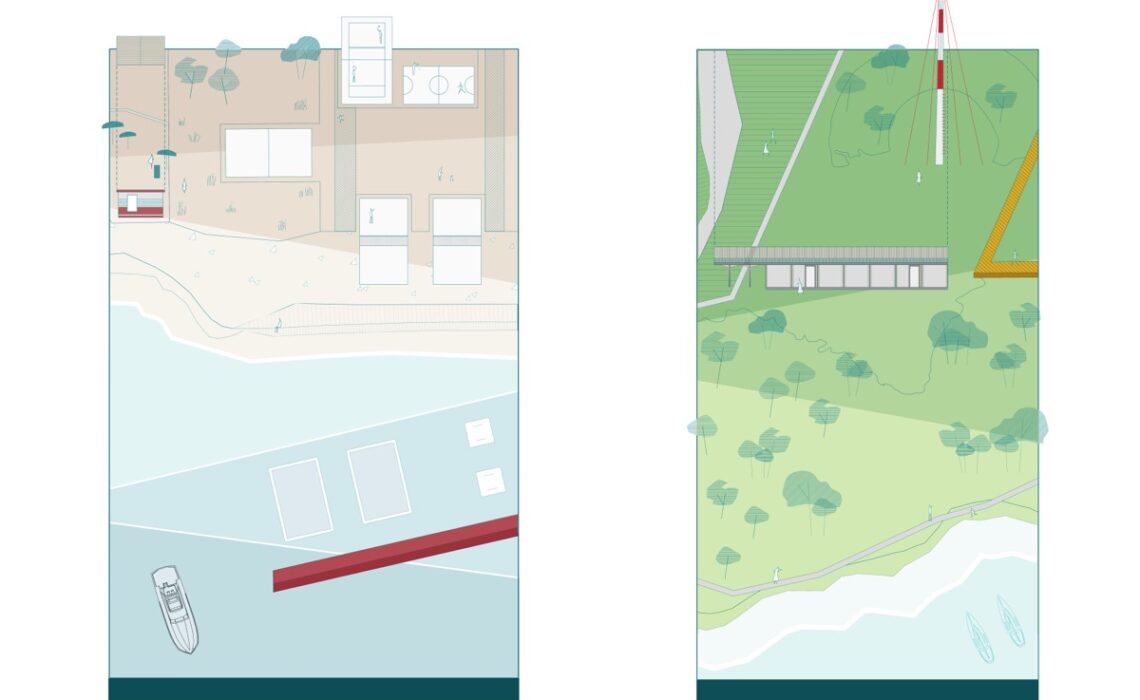
Closing the Crater is the pretext for a spatial and above all social reflection on the Ionian capital. This compositional project embraces the themes of reuse and the relationship with the architecture of the past: the Cheradi archipelago, consisting of the islands SS. Pietro and Paolo together with the islet of S. Nicolicchio, about 6 km from the mainland, is still in a state of abandonment.
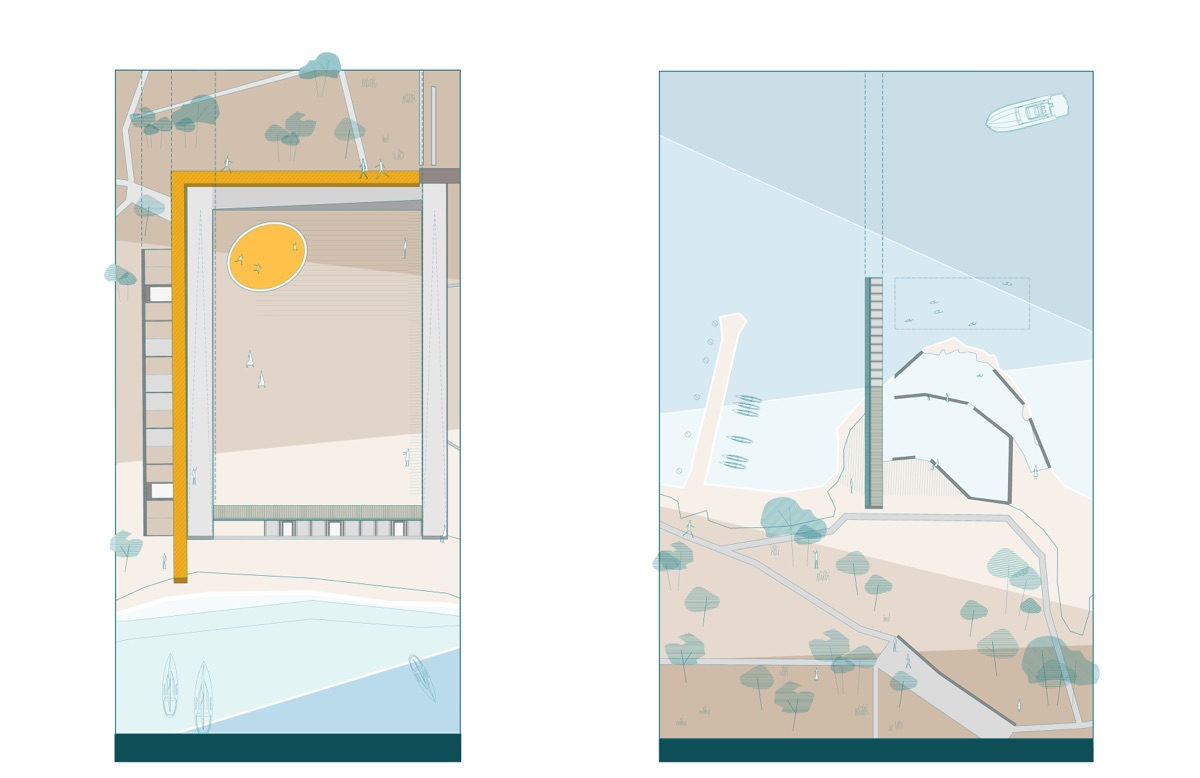
The first moment of research focuses on the analysis of the urban pattern of the city of Taranto, from the expansion of Borgo Umbertino to contemporary time, on the compositional and design study of the same waterfront, which with the islands of SS. Pietro and Paolo “the Crater” and on a social character reading that incorporates an analysis of the human interactions inside the homonymous Gulf. Starting from historical, socio-economic and territorial bases, these kinds of analysis find their development in an in-depth study, first of a spatial nature on a urban scale, then in an economic and social development plan for a post-steel future of the city of Taranto itself.

The next step focuses instead on the architectural heritage present on the SS. Pietro and Paolo Islands, a patrimony of “urban” archeology of an almost exclusively 19th-century nature. By studying and adhering to two national bans, a plan for the reutilization of the archipelago in a state of abandonment is envisaged: the program of the XX Giochi del Mediterraneo in Taranto, scheduled in 2026, and the old 1997 bans for the “Islands of science” find their development in the reuse of existing artefacts. The S. Pietro Island, which today results still active for maritime and aeronautical monitoring, acquires a new face through the integration of sports systems to the pre-existence. The old radio towers and the Military Battery are presented, during the design phase, such as pivotal points of the system of the Giochi del Mediterraneo, which host, in addition to the Olimpic Village, of which is already later planned to be converted into post-Olympic competition guest quarters, numerous systems for sport preparation and for water sports not included in the current Games’ dislocation plan used by the municipal administration. The island also hosts additional intervention for infrastructural improvement with the construction of a new harbour berth and a nautical club, moreover to receptive infrastructures today not present on the island.
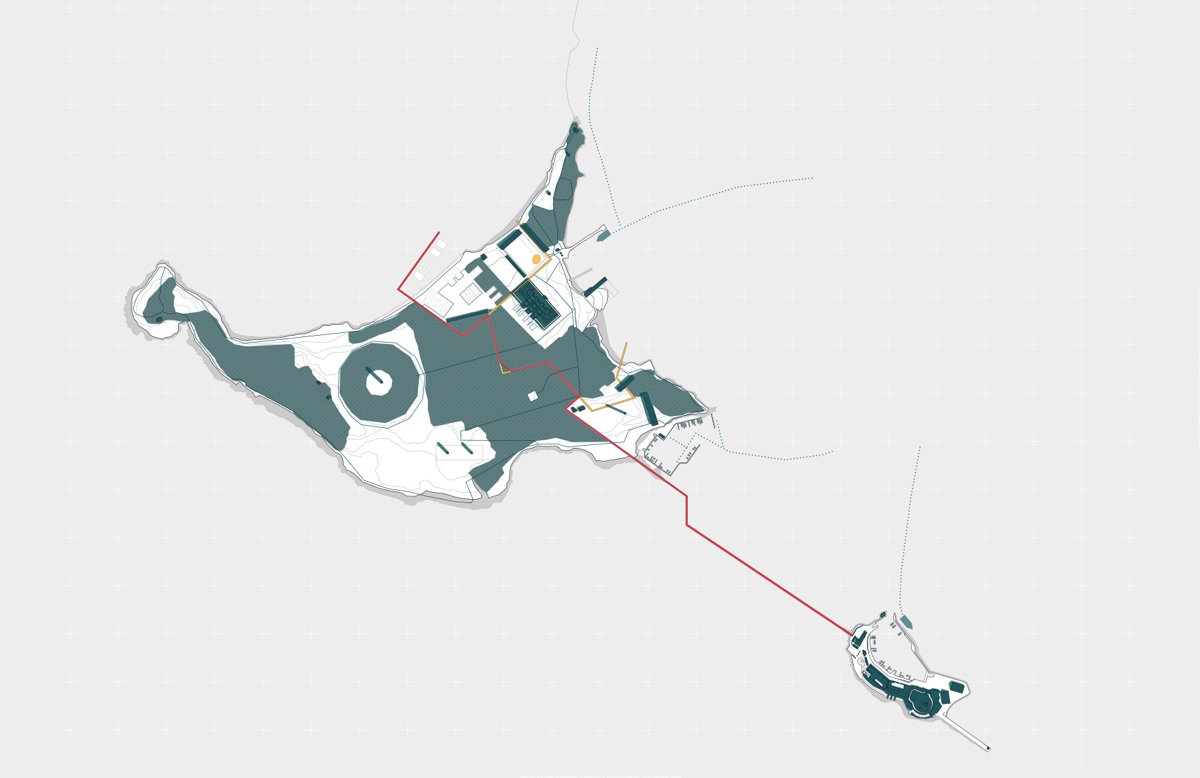
The project for the S. Paolo island, instead, exclusively works on the re-use of the existing infrastructures, without using additional new construction operations. The historical heritage, built in wartime during the Napoleonic wars by the French navy, is manipulated to accommodate new facilities for marine and microbiological research, analysis, and education with a focus on the flora and fauna found in the Gulf ecosystem. The transofrmation of the naval buildings into a new research centre is the design focus of the entire islet of S. Paolo: the old barracks are converted into a nautical club that accomodates within it the terminal part of the connection path with the nearby S. Pietro, the current nautical landing is expanded for a direct connection with strategic points of the Crater and in the old Vittorio Emanuele II Armored Tower, the project situates a museum and educative centre as required by the notices taken under analysis in addition to planning for the island’s operational services.
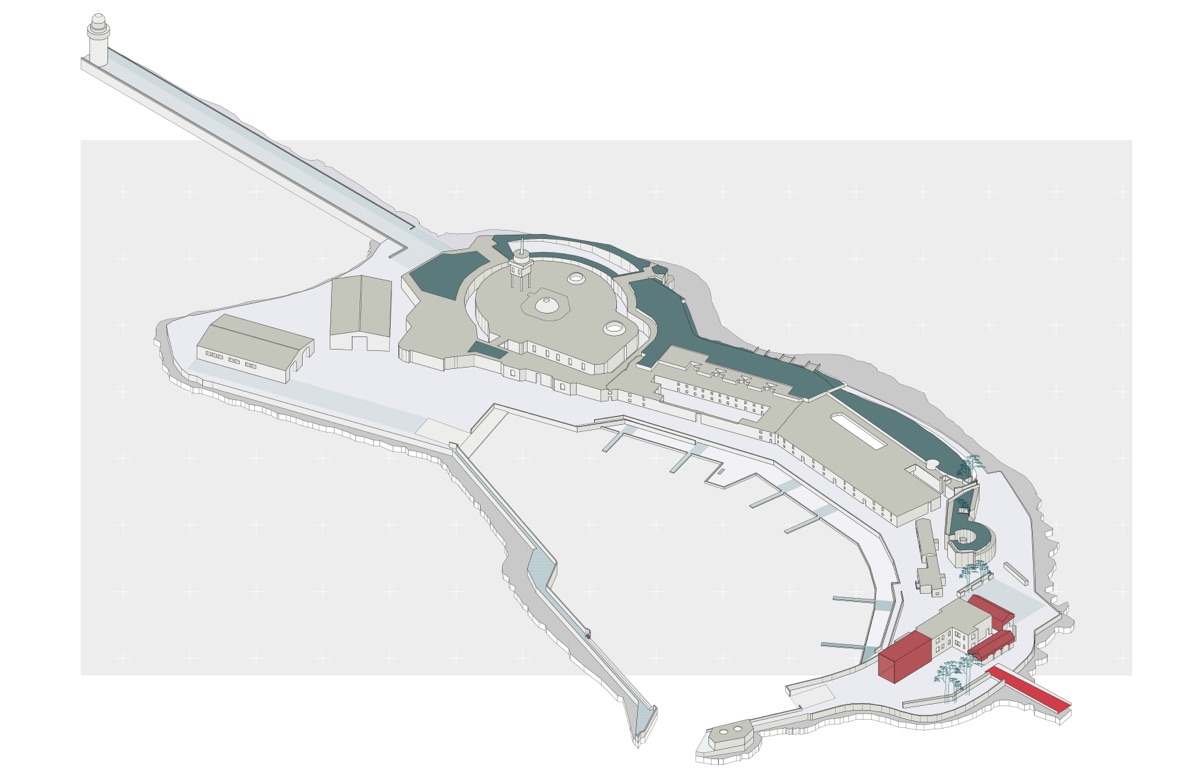
The two islands, which have always been disconnected as from the city as from each other, from an infrastructural point of view now acquire a new connection through the creation of a characterising architectural element: the ribbon. This, of dual nature, functions as a connective-natural element, as an architectural element connecting the two islands and as a dividing element between the naturalistic sphere of the individuals and the one still active militarily. Moreover, this design element plays a prominent role for the Olympic Games by hosting, along its surface, the triathlon sports course.
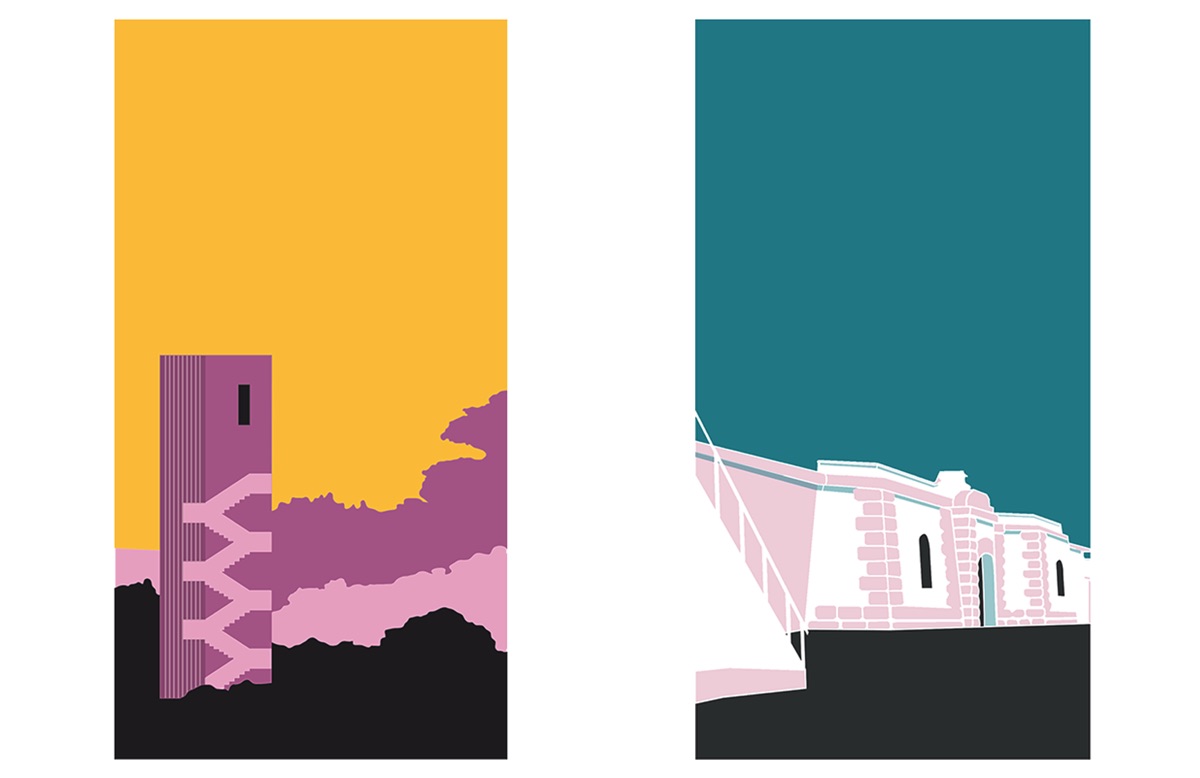
The entire project is not intended to aim only to a simple operation of reuse and re-development of the Cheradi islands, that verge into a state of neglect, but rather aims to restart, with some design operations of re-functionalization, a whole social, economic and especially cultural system within the city of Taranto. The design alternative thus wants to see in the Cheradi a concrete alternative for the city after the steel crisis, it does not want to ignore the clear problems of industrialization neither does it want to denounce the endless possibilities offers by the territory. Instead, the design operation wants to consider the city as a whole, in his full and complexity by finding the archipelago as a new social and cultural possibility.
What has always been a familiar landscape may thus become a reason for collective, economic and educational development, giving the possibility of new work to all those who have already been trained in the iconic city by putting the employment monopoly associated with the steel industry in check.